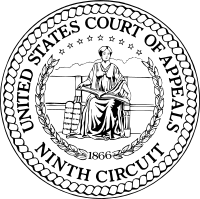Jablonski by Pahls v. United States
Jablonski by Pahls v. United States, 712 F.2d 391 (9th Cir. 1983)[1] is a landmark case in which the 9th Circuit Court of Appeals determined that a mental health professional's duty to predict dangerousness includes consulting a patient's prior records, and that their duty to protect includes the involuntary commitment of a dangerous individual; simply warning the foreseeable victim is insufficient.
| Jablonski by Pahls v. United States | |
|---|---|
 | |
| Court | United States Court of Appeals for the Ninth Circuit |
| Full case name | Meghan Corinne Jablonski, a minor, by her Guardian ad Litem, Isobel C. Pahls v. United States of America |
| Argued | December 6, 1982 |
| Decided | June 14, 1983 |
| Citation(s) | 712 F.2d 391 (9th Cir. 1983) |
| Case history | |
| Subsequent action(s) | Amended Aug. 8, 1983 |
| Court membership | |
| Judge(s) sitting | Eugene Allen Wright, J. Clifford Wallace, Anthony Kennedy |
| Case opinions | |
| Majority | Wallace, joined by Wright, Kennedy |
Facts
Phillip Jablonski was dating Melinda Kimball and had threatened to kill her and her mother (Isobel Pahls). After one incident that culminated in a threat towards her mother, she took him to the Loma Linda VA Hospital, where the doctor conducted a risk assessment, but did not consult his prior records, which documented a history of violent behavior. Based on this incomplete data, he determined erroneously that Jablonski was not a danger to himself or others and released him. He warned Kimball to leave Jablonski but did not warn her of his potential for violence. When Jablonski was discharged from the hospital, he killed Kimball.[1][2]
Ruling
The court ruled that the doctor's failure to secure the patient's previous records constituted negligence, as the information in his files would have affected the risk assessment and thus the actions taken to protect the foreseeable victim.[3]
Legacy
The legal precedent set by this case extends the duty of the mental health professional to secure previous records when conducting a risk assessment, and the duty to protect to include the involuntary hospitalization of a dangerous individual.
References
- Jablonski by Pahls v. United States, 712 F.2d 391 (9th Cir. 1983).
- Greene, John M. (August 3, 2006). "Psychiatrist Duties: Tarasoff". Stanford University Department of Psychiatry. Archived from the original on June 12, 2008. Retrieved 2008-07-20.
- Felthous, Alan R. (September 2006). "Warning a Potential Victim of a Person's Dangerousness: Clinician's Duty or Victim's Right?". Journal of the American Academy of Psychiatry and the Law. 34 (3): 338–348. PMID 17032958. Retrieved 2008-07-20.